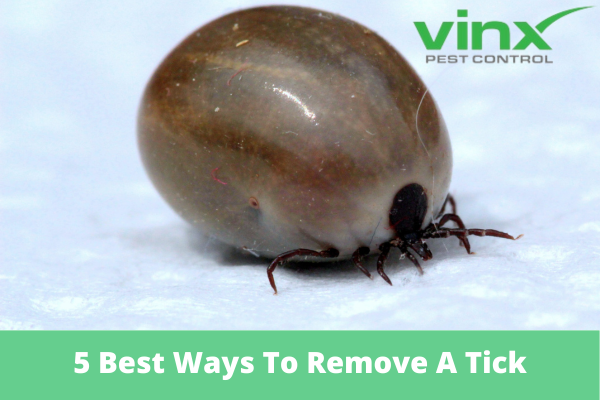When we find a tick bite, we worry about Lyme disease. The risk is low, but quick tick removal is key to avoid infection.
At Vinx Pest Control, we know how important safe and fast tick removal is. We’ll show you five ways to remove ticks. This helps lower the risks from tick bites.
We want to give you the knowledge and confidence to deal with tick bites. This keeps you safe and healthy.
Key Takeaways
- Understand the importance of prompt tick removal to minimize infection risks.
- Learn about the five effective methods for removing ticks safely.
- Discover how Vinx Pest Control can assist with tick-related issues.
- Gain confidence in handling tick bites effectively.
- Reduce the risk of Lyme disease and other tick-borne illnesses.
Understanding the Tick Threat
Ticks are spreading diseases and are a big health risk. They carry many diseases. This is why we need to know about them.
Common Tick Species in the United States
In the U.S., there are many kinds of ticks. Each can spread different diseases. The blacklegged tick, lone star tick, and American dog tick are common.
These ticks can give you Lyme disease, Rocky Mountain spotted fever, and STARI. Knowing which ticks are in your area is key to staying safe. Vinx Pest Control can help you understand and manage ticks.

Tick Habitats and Seasonal Activity
Ticks live in woods, bushes, and grass. They are most active from April to October. But, this can change based on where you live and the weather.
Knowing where ticks live and when they are most active helps you avoid them. Vinx Pest Control can help keep ticks away from your home. This makes it safer for you and your family.
Health Risks Associated with Tick Bites
Tick bites can be very dangerous. They can spread diseases that make you very sick. It’s important to know about these risks to stay safe.
Lyme Disease and Other Tick-Borne Illnesses
Lyme disease is a big problem in the US. It’s caused by a germ called Borrelia burgdorferi. Other diseases like Rocky Mountain spotted fever, anaplasmosis, and babesiosis are also serious.
These diseases can be hard to spot because their symptoms are similar to other illnesses. For example, Lyme disease might make you feel tired, have a headache, or a rash that looks like a bull’s-eye. But not everyone gets this rash.
- Lyme disease: Caused by Borrelia burgdorferi, transmitted by black-legged ticks.
- Rocky Mountain spotted fever: Caused by Rickettsia rickettsii, transmitted by American dog ticks and other species.
- Anaplasmosis: Caused by Anaplasma phagocytophilum, transmitted by black-legged ticks.
Recognizing Symptoms After a Tick Bite
It’s key to spot symptoms of tick-borne illnesses early. Watch for fever, headache, or rash after a tick bite. If you notice these signs, get help right away.
Early treatment with antibiotics can really help. Also, try to save the tick if you can. Knowing the type of tick can help doctors figure out what disease you might have.
Essential Tools for Safe Tick Removal
Removing ticks safely needs the right tools. The right equipment makes a big difference.
Professional Tick Removal Tools
Professional tools make removing ticks safe and easy. You can find fine-tipped tweezers, tick hooks, and spoons. Tweezers are best because they grab the tick close to your skin.
Tick hooks and spoons also work well. They slip under the tick and pull it out gently. You can find these tools at outdoor and pet stores.

Household Items That Can Work in an Emergency
When you don’t have special tools, use what you have at home. Dental floss or thread can make a slip knot around the tick. This helps you pull it out carefully.
Credit cards or thin, sturdy objects can also help in an emergency. But, it’s safer to use professional tools. If you’re often around ticks, get the right tools. For big tick problems, call Vinx Pest Control for help.
Method 1: The Fine-Tipped Tweezers Technique
The fine-tipped tweezers technique is a simple way to remove ticks. It helps avoid infections. It’s a method many experts recommend.
Step-by-Step Removal Process
To remove a tick with fine-tipped tweezers, do this:
- Grasp the tick as close to your skin as possible.
- Pull upward with steady, even pressure. Do not twist or jerk the tick.
- Continue pulling upward until the tick is completely removed.
- Clean the bite area with soap and water and apply an antiseptic.
Why Tweezers Are Often the Most Recommended Method
Fine-tipped tweezers are top for tick removal. They let you hold the tick close to the skin. This lowers the chance of infection.
Common Mistakes to Avoid
When using tweezers, avoid these mistakes:
- Twisting or jerking the tick, which can cause parts of the tick to remain in the skin.
- Using blunt tweezers, which may not grasp the tick firmly.
- Not cleaning the bite area afterward, which can lead to infection.
By using the right technique and avoiding mistakes, tweezers can safely remove ticks.
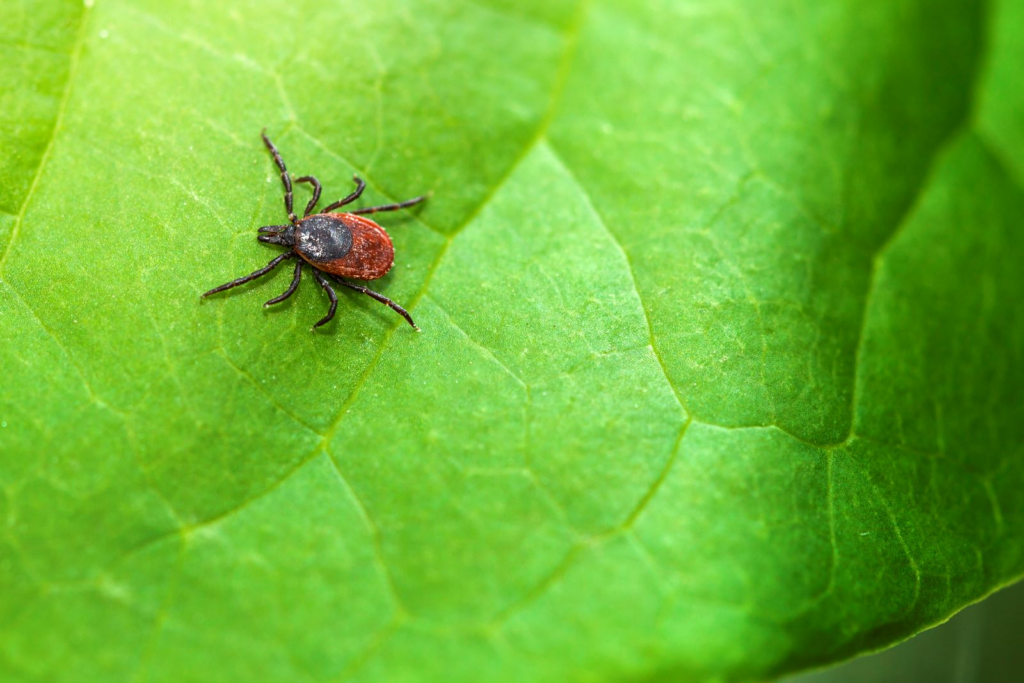
Method 2: Using Specialized Tick Removal Tools
Specialized tick removal tools are a good choice. They help remove ticks safely and quickly. This lowers the chance of getting sick or facing more problems.
Types of Commercial Tick Removal Devices
There are many tick removal devices out there. They meet different needs and likes. Some common ones are:
- Tick hooks: These grab the tick firmly for easy removal.
- Tick spoons: Like tick hooks, they scoop out the tick without breaking it.
- Tick removal kits: These have tools and guides for safe removal.
These tools help avoid pushing the tick’s mouthparts deeper. This lowers the chance of getting infected.
How to Use Tick Hooks and Spoons
Using tick hooks and spoons needs care to remove the tick fully. Here’s how to do it:
- Put the tick hook or spoon near the skin, by the tick’s mouth.
- Hold the tick gently but firmly.
- Pull up slowly and steadily.
- Keep going until the tick is all gone.
Don’t twist or jerk the tick. This can make it break apart.
Comparing Effectiveness with Other Methods
Tick removal tools are often compared to other ways, like tweezers or dental floss. Tick hooks and spoons are made just for ticks. They work very well.
Here’s how they compare:
- Tick hooks and spoons are quicker and easier to use than tweezers.
- They help avoid infections by removing the tick whole.
- These tools are great for people who often find ticks.
Method 3: The Dental Floss or Thread Method
The dental floss or thread method is a good way to remove ticks. It uses a slip knot to pull the tick out safely.
Creating a Slip Knot for Tick Removal
You need dental floss or thread to start. Make a small loop at the end for a slip knot. This knot helps you grab the tick without hurting it more.
The knot should be tiny so it fits around the tick. Practice making this knot before you need it.
Step-by-Step Instructions
Here’s how to remove a tick with dental floss:
- Find the tick and slide the slip knot around its mouth. Make sure not to touch the body.
- Pull the knot tight by pulling both ends of the floss.
- Pull up slowly and steadily until the tick comes out.
- Then, clean the area with soap and water and use an antiseptic.
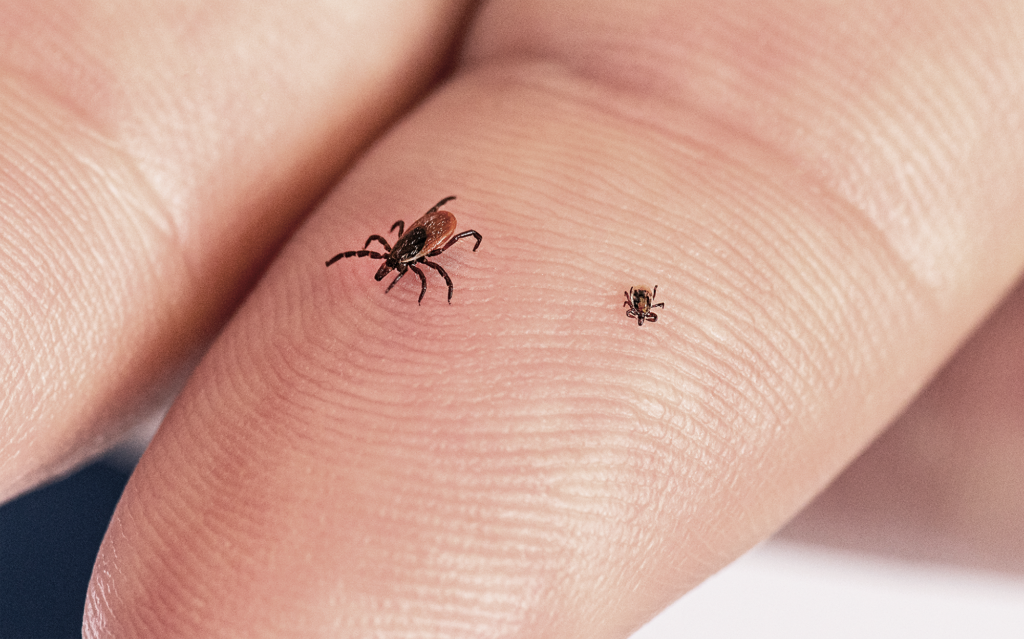
When This Method Works Best
This method is best when the tick is not too deep. It’s good when you don’t have tweezers. But, it needs some skill, so practice first.
Method 4: Tick Cards and Removal Kits
Tick cards and removal kits are easy and work well. They make removing ticks simple, which is great during tick season.
How Credit Card-Style Removal Tools Work
Credit card-style tools help slide under ticks for easy removal. They are made of plastic or metal. The curved edge lifts the tick out of your skin.
These tools make removing ticks simple. They help avoid pushing the tick deeper into your skin. This is good for ticks that are close to the surface.
Using Pre-Packaged Tick Removal Kits
Tick removal kits come with tools like tick cards, tweezers, and wipes. They help remove ticks and clean the area. These kits are handy for quick tick removal.
These kits are easy to carry. They fit well in first-aid kits or for outdoor trips. This makes them a smart choice for outdoor lovers.
Effectiveness and Limitations
Tick cards and kits work well for removing ticks. But, they might not work for deeply embedded ticks. Always follow the instructions and be careful to avoid irritation.
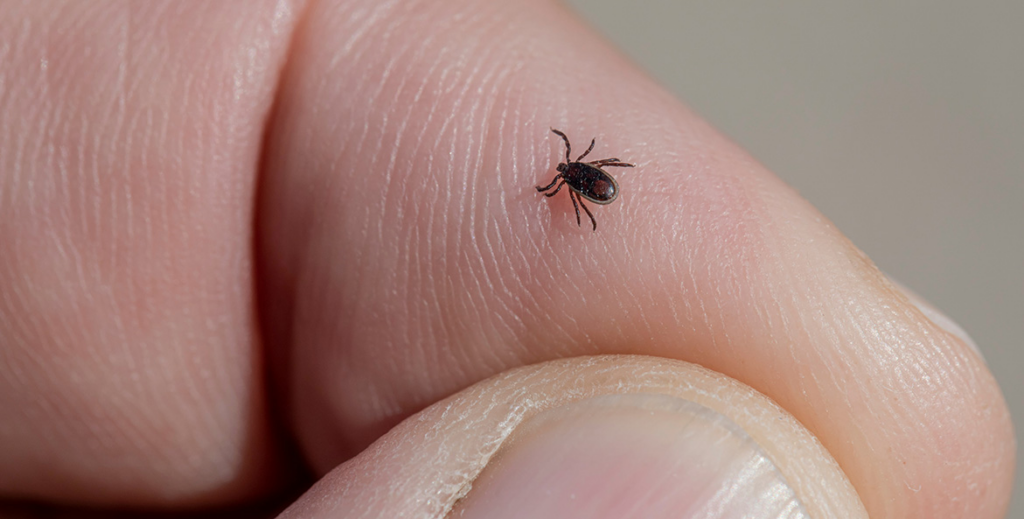
Method 5: Professional Tick Removal Services
Professional tick removal services help manage tick problems. If ticks are a big issue, it’s time to get help. Vinx Pest Control knows how dangerous ticks are and offers solutions to get rid of them.
When to Contact Vinx Pest Control for Tick Issues
Call us if you can’t handle a big tick problem yourself. This is true if you or your family get bitten a lot. Or if you find ticks in places you spend a lot of time, like your yard.
Signs you need professional help include finding many ticks on pets or in your home. Or if you get bitten by ticks more often. By calling Vinx Pest Control, we’ll fix the problem fast and well.
What to Expect from Professional Tick Removal
Our tick removal service is thorough and quick. Our techs know how to find and remove ticks. They use special tools and methods to get rid of all ticks and lower the risk of diseases.
We’ll work with you to figure out how bad the problem is. Then, we’ll make a plan to solve it. Your safety and your family’s, including pets, are our top priority.
Comprehensive Tick Control Solutions
At Vinx Pest Control, we don’t just remove ticks. We also offer solutions to keep them away. We find and treat tick spots, use special treatments, and teach you how to keep ticks out of your yard.
We understand ticks and use many ways to keep your place safe. Our aim is to give you peace of mind. Knowing your tick problem is in good hands with us.
After the Tick Is Removed: Critical Next Steps
After you remove the tick, there are important steps to take. These steps help prevent tick-borne illnesses. They keep you safe.
Proper Tick Disposal and Identification
Dispose of the tick right after removing it. You can put it in a sealed bag or soak it in alcohol. This stops it from biting others or pets.
If you can, save the tick. Some ticks carry diseases. Knowing the tick type helps doctors diagnose illnesses. Take it to a lab or doctor for identification.
Cleaning and Treating the Bite Area
Clean the bite area well with soap and water. Use an antiseptic to lower infection risk. Here’s how:
- Wash with soap and warm water.
- Use an antiseptic like iodine or rubbing alcohol.
- Watch for signs of infection like redness or swelling.
When to Seek Medical Attention
Not all tick bites cause illness. But, watch for signs. See a doctor if you have:
- Fever, chills, or headache.
- A rash or redness around the bite.
- Joint pain or swelling.
If symptoms worry you, talk to a doctor. Early treatment helps with tick diseases.
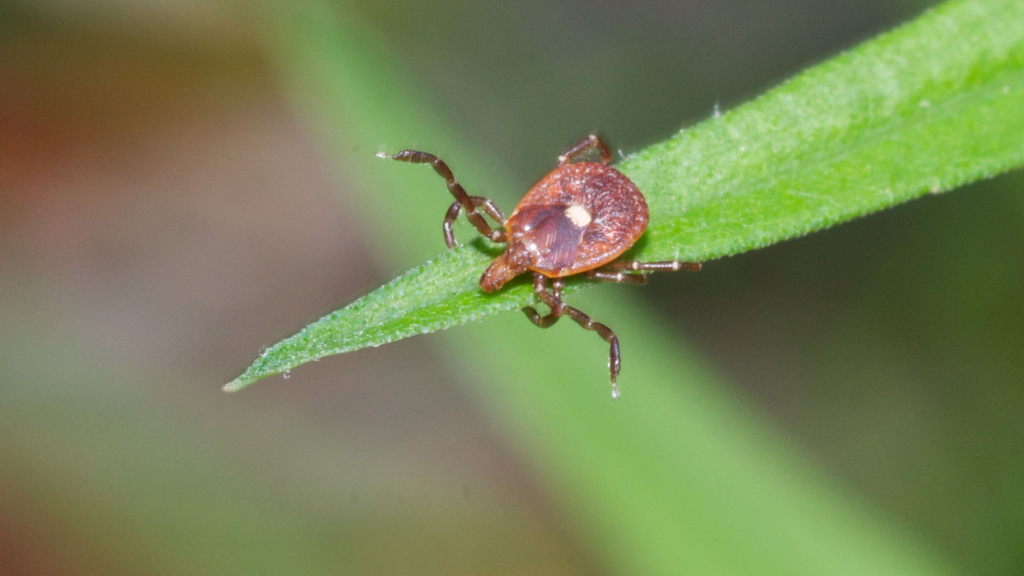
Conclusion
Removing a tick safely is very important. It helps prevent tick-borne illnesses. We talked about five ways to remove ticks, like using tweezers or special tools.
Preventing ticks is also key. Using tick repellent is a big part of this. Knowing the dangers of tick bites helps us stay safe.
Vinx Pest Control helps a lot with tick control. They offer professional tick removal services. Their experts make sure ticks are removed safely.
To keep ourselves and our loved ones safe, we need to remove ticks safely and prevent them. For help with tick removal and control, contact Vinx Pest Control.
FAQ
Q: What are the most common tick species in the United States?
A: In the U.S., the blacklegged tick, lone star tick, and American dog tick are common. They can spread diseases like Lyme disease.
Q: How can I identify a tick bite?
A: A tick bite looks like a small red bump. It might turn into a rash if the tick has a disease like Lyme.
Q: What are the health risks associated with tick bites?
A: Tick bites can give you serious diseases. These include Lyme disease, Rocky Mountain spotted fever, and southern tick-associated rash illness.
Q: How can I remove a tick safely?
A: Use fine-tipped tweezers to grab the tick close to your skin. Pull it up slowly and steadily.
Q: Are there any specialized tools for tick removal?
A: Yes, there are tools like tick hooks and spoons. They help remove ticks safely and well.
Q: Can I use household items to remove a tick?
A: In an emergency, you can use dental floss or thread. Make a slip knot around the tick’s mouthparts.
Q: What should I do after removing a tick?
A: Clean the bite area with soap and water. Apply an antiseptic. Save the tick for later if symptoms show up.
Q: When should I seek medical attention after a tick bite?
A: See a doctor if you have fever, headache, or rash after a tick bite. Or if the tick was infected.
Q: How can I prevent tick bites?
A: Use tick repellents and wear protective clothes. Also, check for ticks after being outside.
Q: Can Vinx Pest Control help with tick control?
A: Yes, Vinx Pest Control offers tick control services. They can remove and prevent ticks.
Q: What is the best method for tick removal?
A: The best way is to use fine-tipped tweezers. It lets you remove the tick precisely.
Q: How can I identify the tick that bit me?
A: Save the tick in a sealed container. Then, talk to a healthcare professional or Vinx Pest Control.



